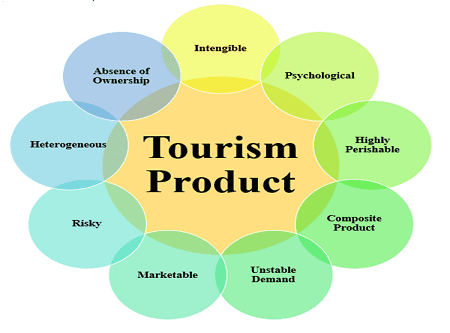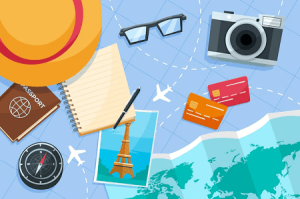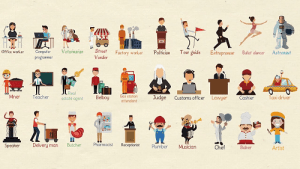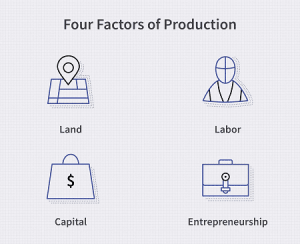Tourism product-
A “tourism product” refers to any service or experience that is marketed and sold to travelers, typically for leisure purposes. It encompasses everything that a tourist consumes during their trip, including attractions, accommodations, transportation, entertainment, and other hospitality services. Here are some key elements that constitute a tourism product:
- Attractions: These are the main draws for tourists, such as historical sites, natural landmarks, theme parks, museums, beaches, and cultural events.
- Accommodations: Hotels, resorts, vacation rentals, and hostels where tourists stay during their trip.
- Transportation: Includes airlines, trains, buses, car rentals, and other modes of transport that tourists use to reach their destination and get around.
- Entertainment: Activities and experiences that tourists engage in for leisure and enjoyment, such as guided tours, adventure sports, shopping, dining, and nightlife.
- Hospitality Services: Restaurants, cafes, bars, and other dining options, as well as services like spa treatments, guided tours, and local experiences offered to enhance the tourist’s stay.
- Tourist Infrastructure: The overall infrastructure supporting tourism, including airports, roads, public transportation, tourist information centers, and emergency services.
- Destination Image and Marketing: How a destination is perceived and promoted through branding, advertising, and marketing efforts aimed at attracting tourists.
The tourism product is not just limited to physical offerings but also includes intangible aspects like the local culture, hospitality, and the overall experience that visitors have during their stay. Successful tourism products are often developed with careful consideration of the target market’s preferences, interests, and expectations, aiming to create memorable and enjoyable experiences for travelers.
What is Required Tourism product
A “Required Tourism product” refers to essential components or offerings within the tourism industry that are necessary to attract and cater to tourists effectively. These are foundational elements that destinations or tourism businesses must have or develop to meet the basic needs and expectations of travelers. Here are some key aspects that constitute a Required Tourism product:
- Accommodations: Adequate and varied options for lodging such as hotels, motels, resorts, hostels, vacation rentals, and campgrounds.
- Transportation: Reliable and convenient transportation infrastructure including airports, roads, highways, public transit, taxis, car rentals, and possibly ferry services for islands or coastal areas.
- Basic Services: Access to essential services such as healthcare facilities, pharmacies, police stations, and emergency services to ensure the safety and well-being of tourists.
- Information Services: Tourist information centers, websites, maps, and signage to help visitors navigate the destination, learn about local attractions, and access necessary services.
- Dining Options: A variety of restaurants, cafes, eateries, and food options catering to different tastes and dietary preferences of tourists.
- Safety and Security: Measures in place to ensure the safety of tourists, including effective law enforcement, emergency response systems, and safety regulations for activities and attractions.
- Cultural and Heritage Sites: Preservation and promotion of cultural and historical landmarks, museums, galleries, and events that showcase local traditions and heritage.
- Cleanliness and Environmental Sustainability: Efforts to maintain cleanliness in public spaces, promote waste management, and preserve natural resources and ecosystems.
- Accessibility: Facilities and services that cater to tourists with disabilities or special needs, ensuring inclusivity and equal access to tourism experiences.
- Tourism Infrastructure: Well-maintained facilities such as parks, recreational areas, public restrooms, and tourist-friendly amenities like Wi-Fi and mobile connectivity.
Developing and maintaining these required tourism products are crucial for destinations aiming to attract and satisfy tourists, thereby supporting economic growth through tourism revenue and enhancing the overall visitor experience. Effective planning, investment, and collaboration among stakeholders are essential to meet these requirements and ensure sustainable tourism development.
Who is Required Tourism product
The term “Required Tourism product” doesn’t refer to a specific person. Instead, it describes the essential components or offerings within the tourism industry that destinations or businesses must have to attract and cater to tourists effectively, as I mentioned earlier. It encompasses accommodations, transportation, basic services, information services, dining options, safety measures, cultural sites, environmental sustainability efforts, accessibility features, and tourism infrastructure.
If you’re asking about a specific person related to tourism, such as a required position or role within the industry, it could vary depending on the context. Generally, key personnel in tourism include:
- Tourism Managers/Directors: Responsible for overseeing tourism development and marketing strategies at a destination level.
- Tour Guides: Provide guided tours and information about attractions to tourists.
- Hospitality Staff: Including hotel managers, receptionists, housekeeping, and restaurant staff who ensure a pleasant stay for visitors.
- Transportation Operators: Pilots, drivers, and crew members who facilitate travel for tourists.
- Event Organizers: Plan and manage events and festivals that attract tourists.
- Local Artisans and Cultural Performers: Contribute to the cultural experiences offered to tourists.
These roles collectively contribute to the tourism product by providing services, experiences, and infrastructure that meet the needs and expectations of travelers.
When is Required Tourism product
The phrase “Required Tourism product” typically does not refer to a specific time or moment. Instead, it describes essential components or offerings within the tourism industry that destinations or tourism businesses must have or develop to attract and satisfy tourists effectively. These components are generally required continuously as long as tourism activities are ongoing in a particular destination.
However, if you’re looking for a temporal context where these required tourism products are particularly important, it would be during the planning, development, and ongoing management phases of tourism destinations. Here are some key points where the concept of required tourism products is relevant:
- Destination Planning: During the initial stages of planning a tourism destination, it’s crucial to identify and develop the necessary infrastructure, services, and attractions that will appeal to tourists. This includes ensuring adequate accommodations, transportation options, and attractions.
- Tourism Development: As tourism grows and evolves, destinations must continue to invest in and expand their tourism products to meet changing traveler preferences and expectations. This could involve improving transportation networks, upgrading accommodations, or diversifying attractions.
- Management and Maintenance: Once established, maintaining and managing the required tourism products is essential for ensuring a positive visitor experience. This includes regular upkeep of infrastructure, ensuring cleanliness and safety, and providing ongoing training for tourism service providers.
- Marketing and Promotion: Effective promotion of a destination relies heavily on highlighting its key tourism products. This involves showcasing attractions, amenities, and unique experiences that set the destination apart and appeal to target markets.
In essence, the concept of required tourism products is timeless in the sense that destinations need to continuously meet the fundamental needs and desires of tourists throughout the lifecycle of their visit. It’s an ongoing process of planning, developing, maintaining, and promoting the components that collectively form a compelling tourism experience.
Where is Required Tourism product

The term “Required Tourism product” does not refer to a physical location or specific place. Instead, it describes essential components or offerings within the tourism industry that are necessary for destinations or tourism businesses to attract and cater to tourists effectively.
However, these required tourism products are found in various locations around the world where tourism is a significant economic activity. Here are some examples of where you can find required tourism products:
- Popular Tourist Destinations: Cities and regions known for their attractions, such as Paris (Eiffel Tower, Louvre Museum), New York City (Times Square, Statue of Liberty), or Bali (beaches, cultural sites).
- Tourism Infrastructure: Airports, hotels, resorts, and transportation hubs located in tourist destinations to accommodate visitors.
- Cultural and Historical Sites: UNESCO World Heritage Sites, museums, historical landmarks, and cultural festivals that attract tourists interested in history and culture.
- Natural Attractions: National parks, beaches, mountains, and scenic landscapes that appeal to nature enthusiasts and adventure travelers.
- Hospitality and Dining: Restaurants, cafes, bars, and local eateries that offer a variety of cuisines and dining experiences.
- Tourism Services: Tour operators, travel agencies, tour guides, and visitor information centers that assist tourists in planning and enjoying their trips.
- Entertainment and Leisure Facilities: Theme parks, theaters, shopping districts, and nightlife venues that provide entertainment options for tourists.
These elements can be found in diverse locations worldwide, each offering its unique blend of attractions and services to cater to the needs and preferences of travelers. The concept of required tourism products emphasizes the importance of having these foundational components in place to create a positive and memorable experience for tourists visiting any destination.
How is Required Tourism product
The concept of “Required Tourism product” refers to the essential elements or offerings within the tourism industry that destinations or tourism businesses must have to effectively attract and cater to tourists. Here’s how these required tourism products are typically characterized and managed:
- Identification and Planning:
- Market Analysis: Understanding the target audience and their preferences is crucial. This involves analyzing demographics, interests, and travel behavior to determine what amenities and attractions are necessary.
- Destination Planning: Based on market analysis, destinations plan and develop necessary infrastructure such as accommodations, transportation networks, and attractions that align with the target market’s needs and expectations.
- Development and Investment:
- Infrastructure Development: Investing in building and maintaining essential infrastructure such as airports, roads, public transportation, and utilities to support tourism activities.
- Accommodations: Developing a range of accommodations including hotels, resorts, vacation rentals, and campgrounds to cater to different types of travelers and budgets.
- Attractions and Activities: Creating and maintaining attractions, cultural sites, entertainment options, and recreational activities that appeal to tourists.
- Management and Maintenance:
- Quality Control: Ensuring that tourism products meet quality standards in terms of cleanliness, safety, service, and visitor experience.
- Sustainability: Implementing sustainable practices to preserve natural and cultural resources for long-term tourism viability.
- Regular Upkeep: Continuously maintaining and improving facilities, amenities, and services to enhance visitor satisfaction and attract repeat tourists.
- Marketing and Promotion:
- Destination Branding: Developing a unique identity and positioning in the market to attract specific segments of travelers.
- Advertising and Communication: Promoting tourism products through various channels including digital marketing, travel agencies, trade shows, and tourism boards.
- Visitor Information: Providing clear and accessible information about tourism products, services, and experiences to potential visitors.
- Visitor Experience:
- Customer Service: Providing excellent customer service to enhance the visitor experience and encourage positive word-of-mouth recommendations.
- Diversification: Continuously updating and diversifying tourism products to adapt to changing traveler preferences and market trends.
Overall, the management of required tourism products involves strategic planning, investment, development, maintenance, and promotion of essential elements that collectively create a compelling destination for tourists. Success in managing these elements can lead to increased visitor satisfaction, positive economic impact, and sustainable tourism growth for destinations.
Case Study on Tourism product
Iceland’s Geothermal Attractions
Introduction: Iceland is renowned for its unique natural landscapes and geothermal attractions, making it a compelling tourism destination. The country has strategically developed its geothermal resources into tourism products that attract a diverse range of travelers seeking natural wonders, relaxation, and adventure.
Key Elements of the Tourism Product:
- Geothermal Hot Springs:
- Blue Lagoon: Located near Reykjavik, the Blue Lagoon is one of Iceland’s most famous attractions. It features geothermal seawater rich in minerals, known for its healing properties and stunning azure color. The site offers spa facilities, silica mud masks, and relaxation areas, catering to wellness tourists and day visitors.
- Geysers and Hot Springs:
- Geysir and Strokkur: The Geysir Geothermal Area is home to Geysir, the namesake of all geysers, and Strokkur, a regularly erupting hot spring. These natural phenomena showcase Iceland’s volcanic activity and provide captivating experiences for visitors who can witness Strokkur’s powerful eruptions.
- Volcanic Landscapes:
- Landmannalaugar: This area in the Highlands of Iceland offers dramatic landscapes with colorful rhyolite mountains, geothermal hot springs, and hiking trails. It attracts outdoor enthusiasts, photographers, and nature lovers looking to explore Iceland’s rugged terrain and unique geological formations.
- Cultural Experiences:
- Local Communities: Tourism in Iceland also promotes cultural interactions with local communities, where visitors can learn about Icelandic traditions, cuisine, and folklore. Events like Icelandic music festivals and craft markets showcase the country’s cultural heritage alongside its natural attractions.
Development and Management:
- Infrastructure Development:
- Iceland has invested in infrastructure to support tourism around geothermal attractions, including visitor centers, parking facilities, walking paths, and eco-friendly accommodations. This infrastructure ensures accessibility and enhances visitor experiences while minimizing environmental impact.
- Sustainable Tourism Practices:
- The Icelandic government and tourism operators prioritize sustainability to preserve fragile ecosystems and cultural heritage. Measures include responsible tourism guidelines, waste management initiatives, and education programs for visitors on environmental conservation.
- Marketing and Promotion:
- Iceland’s tourism board promotes its geothermal attractions through digital marketing campaigns, social media, travel agencies, and participation in international trade shows. The branding emphasizes Iceland’s natural beauty, unique geothermal features, and the opportunity for authentic cultural experiences.
Visitor Experience and Economic Impact:
- Visitor Experience:
- Iceland’s geothermal attractions offer diverse experiences, from relaxation in hot springs to hiking through volcanic landscapes, attracting millions of tourists annually. Positive visitor experiences contribute to favorable reviews, word-of-mouth recommendations, and repeat visits.
- Economic Impact:
- Tourism centered around geothermal attractions contributes significantly to Iceland’s economy through revenue from entrance fees, accommodations, dining, guided tours, and souvenir sales. The industry supports local businesses, job creation, and infrastructure development in rural areas.
Challenges and Future Directions:
- Overtourism Concerns:
- Popular sites like the Blue Lagoon face challenges related to overtourism during peak seasons. Sustainable management practices are essential to balance visitor numbers and preserve natural environments.
- Diversification of Offerings:
- Iceland continues to diversify its tourism products beyond geothermal attractions, promoting seasonal activities such as Northern Lights tours, glacier hiking, and cultural festivals. This strategy aims to attract visitors year-round and reduce dependence on specific attractions.
Conclusion:
Iceland’s development of geothermal attractions into a tourism product demonstrates effective planning, infrastructure development, sustainable practices, and strategic marketing. By leveraging its natural resources responsibly, Iceland has established itself as a premier destination for travelers seeking unique geological phenomena, relaxation, and cultural experiences.
This case study highlights how destinations can capitalize on their natural assets to create compelling tourism products that drive economic growth, enhance visitor experiences, and contribute to sustainable tourism development.
White paper on Tourism product
Writing a white paper on a tourism product involves presenting a comprehensive overview and analysis of a specific tourism offering, destination, or initiative. Here’s a structured outline for creating a white paper on a tourism product:
Title Page
- Title of the white paper
- Author’s name and affiliation
- Date of publication
Table of Contents
- List of sections and subsections with page numbers
Executive Summary
- Brief overview of the white paper’s purpose and findings
- Summary of the tourism product being analyzed
- Key recommendations or conclusions
Introduction
- Background information on the tourism industry
- Importance of tourism products in destination marketing and development
- Purpose and scope of the white paper
Section 1: Overview of the Tourism Product
- Description of the tourism product being analyzed (e.g., cultural attraction, natural site, festival)
- Location and geographical context
- Historical background (if applicable)
- Importance and significance to tourism in the region
Section 2: Market Analysis
- Target market(s) for the tourism product (demographics, psychographics)
- Visitor trends and patterns (seasonality, duration of stay)
- Competitive analysis (similar attractions or destinations)
- SWOT analysis (Strengths, Weaknesses, Opportunities, Threats)
Section 3: Development and Management
- Infrastructure development (transportation, accommodations, amenities)
- Environmental and sustainability practices
- Cultural preservation efforts (if applicable)
- Public-private partnerships and stakeholder involvement
Section 4: Marketing and Promotion
- Marketing strategies used to promote the tourism product
- Branding and positioning in the market
- Digital marketing efforts (website, social media, online travel agencies)
- Collaborations with travel agencies, tour operators, and media
Section 5: Visitor Experience and Economic Impact
- Visitor experience (customer reviews, testimonials)
- Economic contributions (revenue generation, employment)
- Social and cultural impacts on local communities
- Challenges faced (overtourism, seasonality, infrastructure constraints)
Section 6: Case Studies or Success Stories
- Examples of successful implementation or management of the tourism product
- Lessons learned and best practices
- Innovations or adaptations over time
Conclusion
- Recap of key findings and insights
- Importance of the tourism product to the destination’s economy and culture
- Recommendations for sustainable development and future growth
References
- List of sources cited in the white paper (academic articles, reports, websites)
Appendices (if needed)
- Additional data tables, charts, maps, or supplementary information
Author Bio
- Brief biography of the white paper’s author(s) or organization
Formatting Tips:
- Use clear headings and subheadings to organize information
- Include visuals (maps, charts, photos) to enhance understanding
- Maintain a professional tone and avoid jargon
- Proofread carefully for clarity, coherence, and accuracy
Industrial Application of Tourism product
The industrial application of tourism products refers to how various industries leverage tourism-related goods and services to generate economic value, enhance local development, and contribute to broader economic sectors. Here are several industrial applications of tourism products:
- Hospitality Industry: This includes hotels, resorts, restaurants, and other accommodations that directly serve tourists. The hospitality sector not only provides lodging and dining but also employs a significant portion of the workforce in many tourist destinations. Industrial applications involve the construction, management, and operation of these facilities, as well as the provision of services such as housekeeping, food and beverage, and guest services.
- Transportation: Airlines, cruise lines, rental car companies, and public transportation systems all play vital roles in the tourism industry. These transportation services connect tourists to their destinations and facilitate movement within regions. Industrial applications include aircraft and vessel manufacturing, maintenance services, logistics, and infrastructure development (such as airports, ports, and roads).
- Tourism Infrastructure: This encompasses the physical and organizational structures that support tourism activities, including airports, ports, roads, bridges, and utilities. Industrial applications involve construction, engineering, architecture, and urban planning sectors that design, build, and maintain these facilities to accommodate growing tourist numbers and ensure a seamless travel experience.
- Entertainment and Recreation: Theme parks, cultural attractions, sports facilities, and recreational activities contribute significantly to tourism experiences. Industrial applications involve the design, construction, and operation of these facilities, as well as the development of tourism-related entertainment products and services (such as guided tours, outdoor adventures, and live performances).
- Retail and Souvenirs: Retailers, artisans, and souvenir shops cater to tourists by offering local products, crafts, and memorabilia. Industrial applications include manufacturing, distribution, and marketing of these goods, as well as retail management and merchandising tailored to tourist preferences.
- Cultural and Heritage Preservation: Museums, historical sites, festivals, and cultural events attract tourists interested in learning about local traditions and history. Industrial applications involve heritage preservation, archaeological research, curatorial services, event planning, and cultural programming that promote cultural tourism and sustainable heritage management.
- Environmental Sustainability: As tourism often relies on natural landscapes and ecosystems, sustainable practices are crucial to mitigate environmental impact. Industrial applications include eco-tourism initiatives, renewable energy development, waste management solutions, and conservation efforts that support responsible tourism practices and protect natural resources.
Overall, the industrial application of tourism products spans multiple sectors, contributing to economic growth, employment opportunities, infrastructure development, and cultural preservation in regions heavily reliant on tourism. Effective collaboration and innovation across industries are essential to enhance visitor experiences, promote sustainable development, and maximize the economic benefits of tourism.





